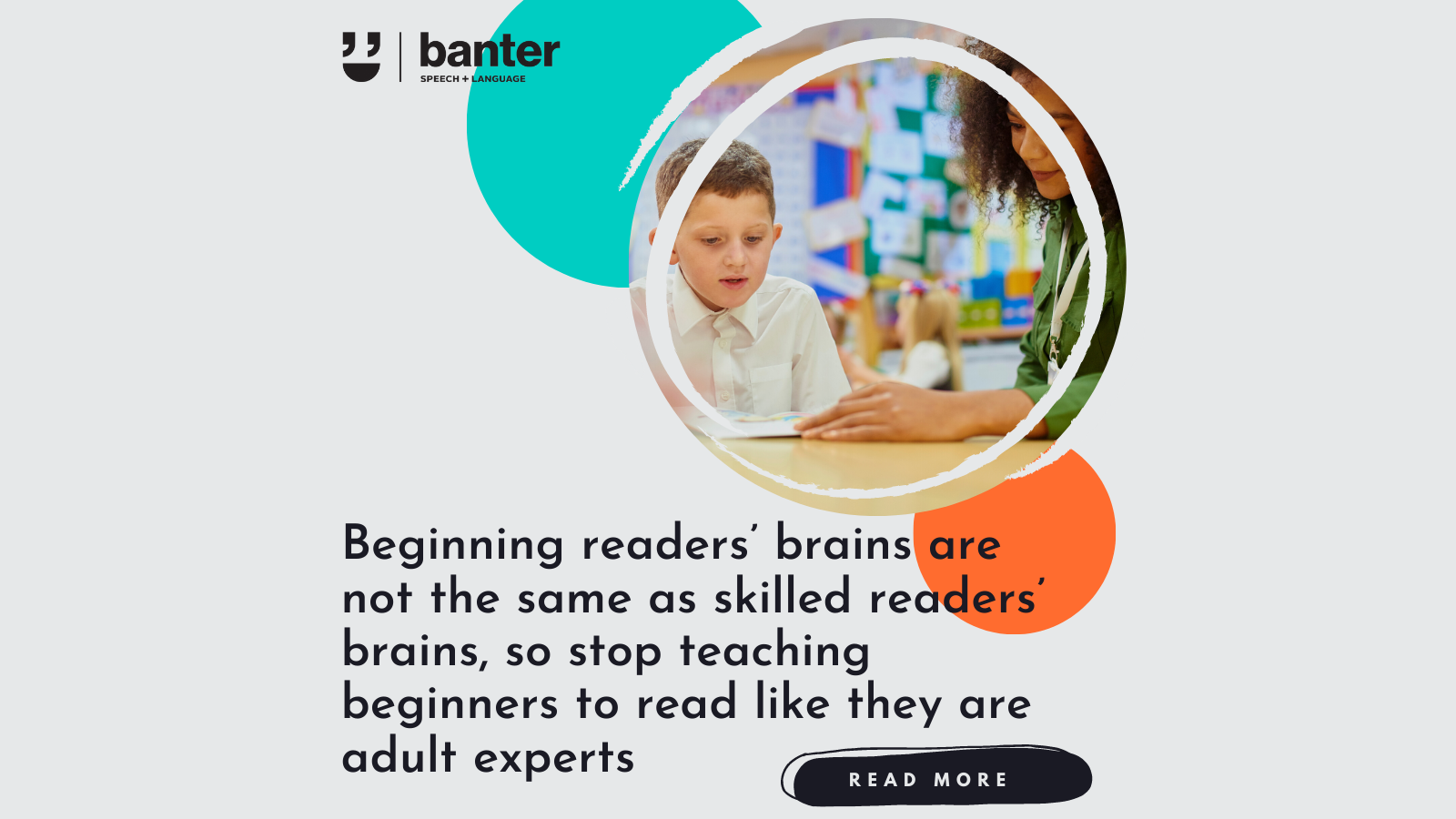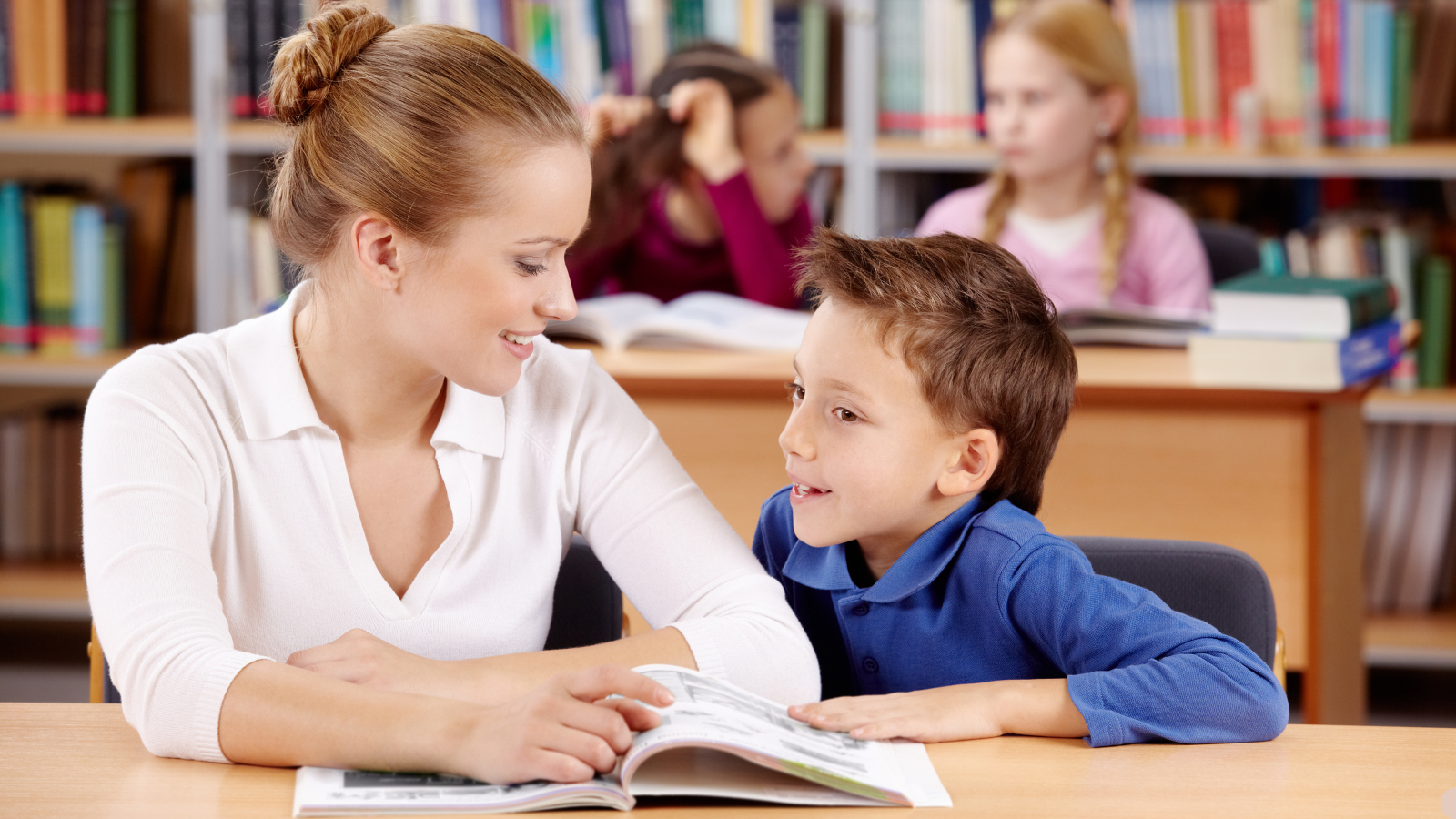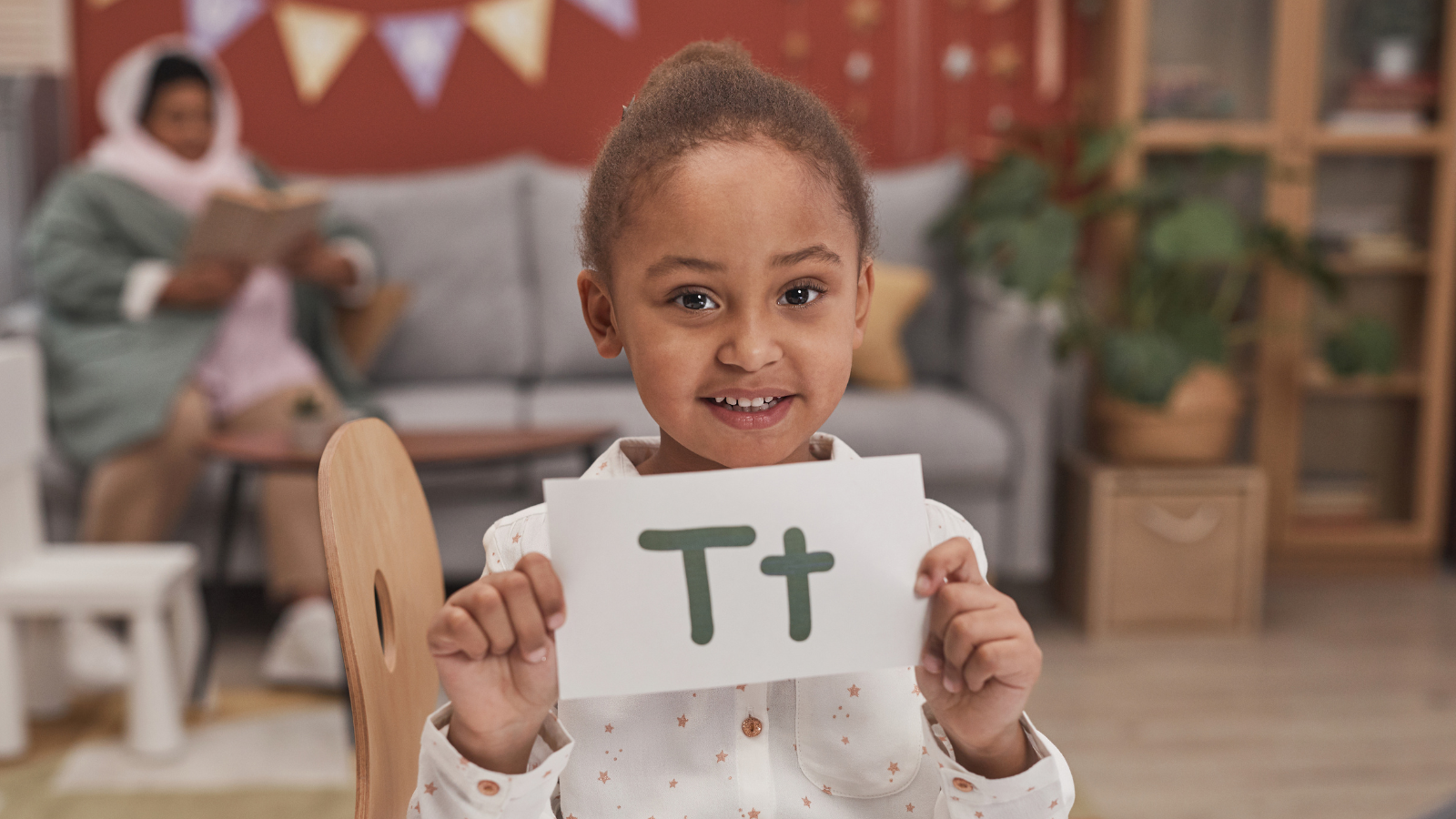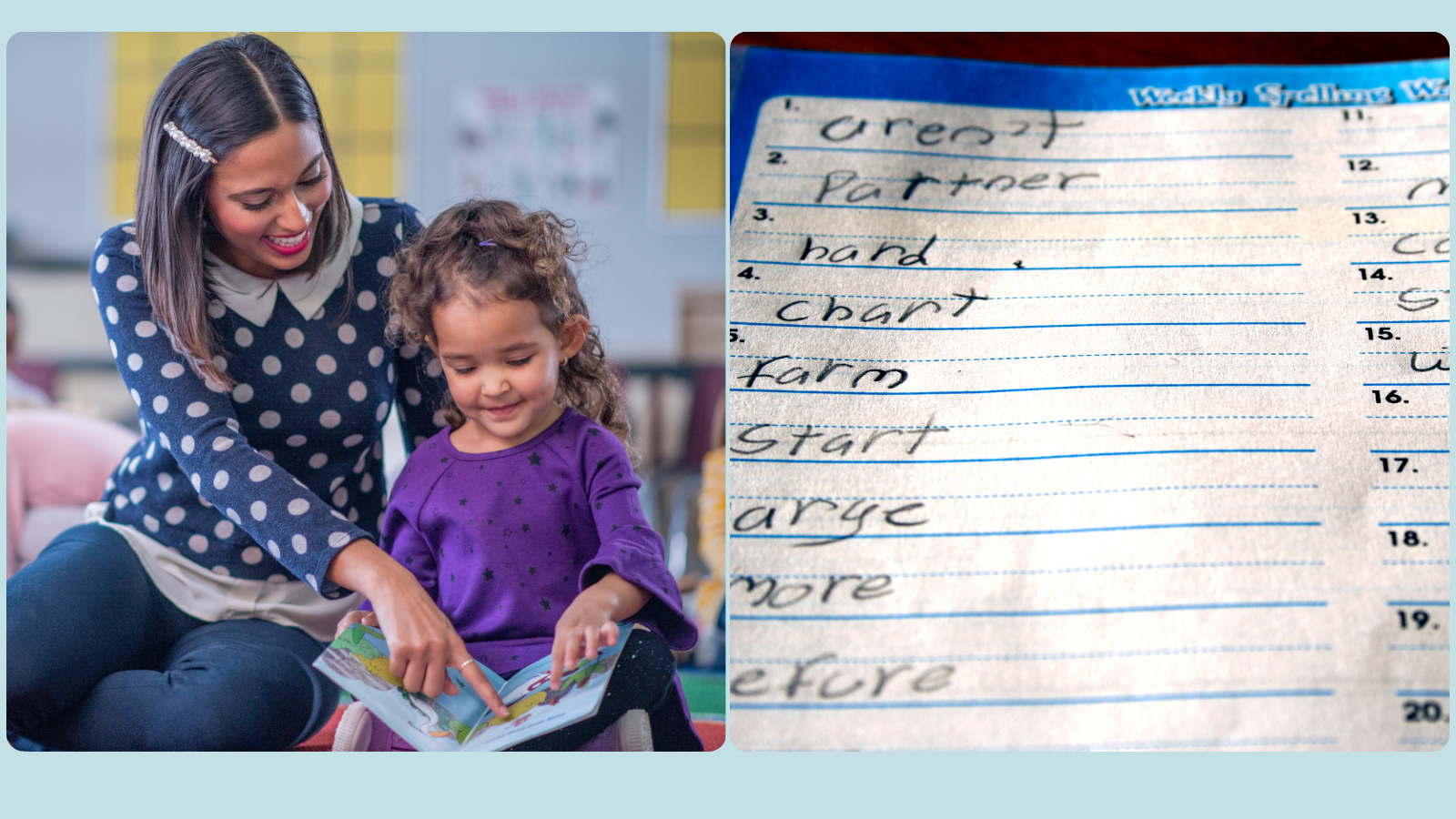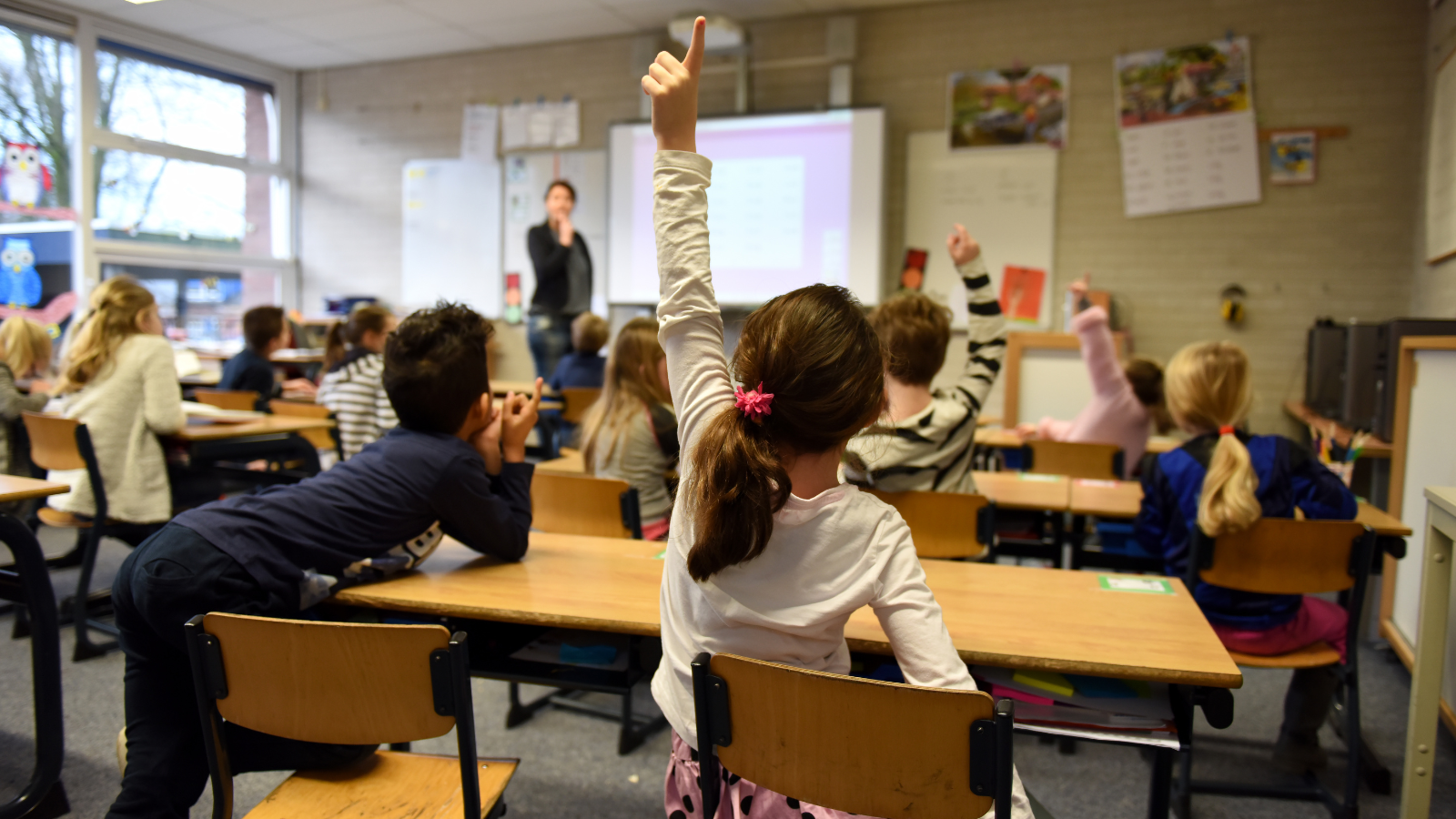Beginning readers’ brains are not the same as skilled readers’ brains, so stop teaching beginners to read like they are adult experts
Unlike speech and oral language (talking and listening), reading is biologically unnatural. Most (not all) people learn to understand and to speak their first language without much fuss. But everyone – in every generation, from every culture, in any language – needs to learn to read. As a species, we’ve only been doing it for a bit over 5000 years.
For some people, learning to read happens easily. For others – including people with dyslexia and reading comprehension problems – learning to read can be a lifelong struggle.
Learning to read changes the brain
Brain plasticity – also called ‘neuroplasticity’ – is the ability of the brain to modify its connections or to rewire itself. Without brain plasticity, the brain would not be able to develop from infancy to adulthood, or recover from brain damage (Banks, 2016).
At birth, we are not wired to read – there is no specialised “reading centre” in the brain. Instead, researchers think that most of us are able to ‘recycle’ evolutionary older brain circuits with similar underlying functions – e.g. general visual processing – to recognise written word forms. This is called the ‘neuronal recycling hypothesis’ (e.g. Dehaene & Cohen, 2007).
Many reading scientists think that learning to read consists of creating mappings (associations) between:
- visual representations (letters and written words);
- phonological representations (speech sounds); and
- semantic representations (word meanings).
These three-sided mappings are the focus of the ‘triangle model of reading’ (e.g. Seidenberg, 2005). This model suggests that learning to read requires us to:
- look at written words, sentences and texts; and
- convert them into oral (spoken) language, so that we can understand them (e.g. Dehaene & Cohen, 2007).
This model is consistent with the evidence-based ‘Simple View of Reading’, which you can read more about here and here and here.
Learning to read: the print-speech convergence
To learn to read, we have to learn to integrate (combine into a useful whole):
- auditory information (speech and oral language comprehension); with
- visual language information (recognising words).
Learning to read results in a brain network that brings together speech, language and print recognition: an overlap in activation during reading tasks. Some researchers call this the ‘print-speech convergence’: a brain signature of successful literacy acquisition (Rueckl et al., 2015).
The development of print-speech convergence can be seen in emerging readers, but not in pre-readers of the same ages. This suggests that learning to read induces (influences or causes) speech-print convergence (Chyl et al., 2018).
The dual-stream model of reading
The brain’s organisation for reading is different for beginners and for skilled readers. The brain changes as beginners learn to read (e.g. Dehaene et al., 2015; and Pugh et al., 2001). To understand what this means in a bit more detail, we need to understand some very basic brain anatomy and a theory called the ‘dual-stream model of reading’ (Marks et al., 2019; and Pugh et al., 2001):
Source: Selket, 2007.
This diagram shows a (very simplified) outline of the human brain visual system. There are two main streams to know about that are relevant for reading:
- the dorsal stream or system, which is marked in green; and
- the ventral stream or system, which is marked in purple.
For developing readers, the dorsal (green) system predominates at first. This stream is associated with analytic processing for learning to integrate the:
- orthographic (letters/spelling);
- phonological (speech sound); and
- lexical-semantic (word comprehension/meaning)
features of printed words. This stream is most involved in the slow, effortful learning that’s needed to build the foundations for reading. We have summarised some of the key research about how best to teach early reading skills here.
As beginners become more skilled, the ventral (purple) system plays an increasingly important role in the processing of reading, facilitating fast, fluent word recognition that does not require effortful decoding. To explore this almost magical process in more detail, you need to learn more about specific dual pathway models of reading, e.g. the DRC model (Coltheart et al., 2001), the Triangle Model (Harm & Seidenberg, 2004) and the CDP+ model (Perry et al., 2010), which are beyond the scope of this article. It’s also useful to learn about the Self-Teaching Hypothesis (e.g. Share, 1995), which we touch on here.
Growing evidence
Evidence for these ideas continues to mount. For example, recent research by He and colleagues on child beginners (aged 9-12 years) and skilled adult readers of Chinese (aged 20-21 years), using a Chinese word-sound matching tasks in speech and print, showed that:
- skilled adult readers demonstrated greater speech-print convergence than children who were beginning to read;
- consistent with the dual-stream model of reading, coactivation in the dorsal stream predominated for children, whereas coactivation in the ventral stream predominated in adults; and
- greater visual-model specialisation was observed with development.
In other words, the researchers found clear evidence of developmental changes in readers’ print-speech networks during word-sound matching processes. (The study is cited as our primary source below, with a link to the full paper.) These findings are consistent broadly with studies using alphabetic languages (e.g. Chyl et al., 2018; Marks et al., 2019; and Preston et al., 2016).*
Bottom line
When we are teaching children and adults how to read, we must remember that:
- reading is biologically unnatural: no one is wired to do it from birth;
- the brain needs to rewire itself to become good at reading; and
- rewiring the brain to read takes lots of time and effort, and comes more easily to some, than to others.
We can help beginners learn to read by:
- understanding the basics about how the brain changes itself as it learns to read;
- keeping up to date with the science of reading; and
- translating that knowledge into practice in our day-to-day work with beginners.
Beginners are not experts. Beginning artists can’t paint like Leonardo da Vinci or Jackson Pollock. Beginner composers can’t write music like Johann Sebastian Bach, John Williams, or Prince. Beginning readers can’t read like Maria Popova, James Clear, Mortimer Adler, Octavia E Butler, Warren Buffett, Mahatma Gandhi – or even just you or me.
Related articles:
- Is your child struggling to read? Here’s what works
- Too many children can’t read. We know what to do. But how should we do it?
- What I think about when I meet a child who can’t read
- “I don’t understand what I’m reading” – reading comprehension problems (and what to do about them)
- What are the priorities for early reading instruction: should we work on executive functions or focus on word decoding and oral language skills?
Principal source:
Yin He, Xin Liu, Jiali Hu, Emily S. Nichols, Chunming Lu & Li Liu (2021). Difference Between Children and Adults in the Print-speech Coactivated Network, Scientific Studies of Reading, DOI: 10.1080/10888438.2021.1965607 https://doi.org/10.1080/10888438.2021.1965607
An introduction to neuroplasticity: What is brain plasticity and why is it so important?
*In studies of alphabetic languages, there were some differences from the findings in He et al., 2021, including significant co-activation of the dorsal posterior temporal regions of the brain in beginning child readers. The researchers speculate that this may be due to the differences between alphabetic and non-alphabetic writing systems.

Hi there, I’m David Kinnane.
Principal Speech Pathologist, Banter Speech & Language
Our talented team of certified practising speech pathologists provide unhurried, personalised and evidence-based speech pathology care to children and adults in the Inner West of Sydney and beyond, both in our clinic and via telehealth.

